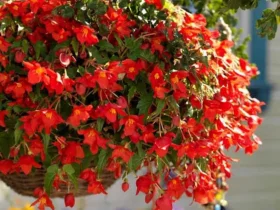In the hidden corners of the world, amidst remote and pristine habitats, a rare and exquisite floral gem blooms in humble elegance—the Rothschild’s Slipper Orchid (Paphiopedilum rothschildianum). This captivating and elusive orchid species has long captured the fascination of orchid enthusiasts and botanists due to its striking appearance and restricted distribution. Named in honor of the illustrious Rothschild family, this slipper orchid is a botanical treasure cherished for its unique beauty and conservation significance. In this article, we explore the enchanting world of Rothschild’s Slipper Orchid, unraveling its allure, characteristics, and conservation efforts to protect this floral rarity.

Origin and Distribution
Rothschild’s Slipper Orchid is a rare and endangered species that hails from the rainforests of the northern part of Borneo. It was first discovered in 1887 by the renowned orchid collector and botanist Henry Nicholas Ridley, who named the species to honor Lionel Walter Rothschild, a British zoologist, and member of the wealthy Rothschild family known for their contributions to science and philanthropy.
The orchid’s native habitat is characterized by dense tropical forests, limestone cliffs, and rocky terrains, where it thrives in the cool and moist microclimates provided by the forest canopies.

Distinctive Characteristics
Rothschild’s Slipper Orchid is celebrated for its striking and unique features, making it stand out among other orchid species. The plant showcases a solitary flower on each stem, featuring a distinctive pouch-like lip or “slipper,” from which its name is derived. The pouch is richly adorned with intricate patterns and vibrant colors, often displaying shades of green, yellow, and purple, with specks and stripes that resemble the delicate brushstrokes of a master artist.
The flower’s pouch serves as a cunning trap for pollinators, attracting insects that slip inside, only to find themselves momentarily trapped by the plant’s clever design. As the insect struggles to escape, it inadvertently brushes against the orchid’s reproductive organs, facilitating pollination.
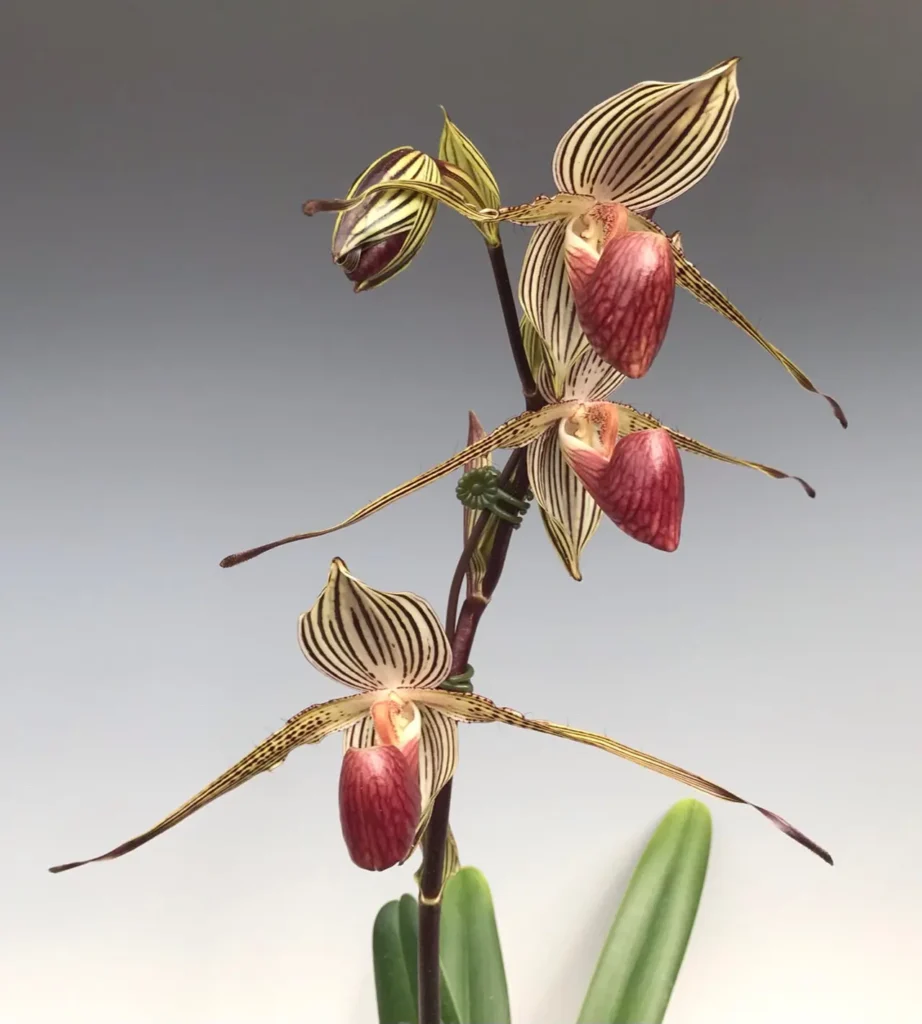
Conservation Efforts
Rothschild’s Slipper Orchid is classified as endangered in the wild due to the loss of its natural habitat from deforestation and human encroachment. The illegal collection and trade of this rare orchid also pose significant threats to its survival.
Conservationists and botanists have recognized the importance of preserving this botanical treasure and have undertaken various efforts to safeguard its future. Initiatives include habitat protection, establishing protected areas, and raising awareness about the orchid’s conservation status. Additionally, efforts to propagate and cultivate the orchid in controlled environments, such as botanical gardens and orchid conservation centers, are essential in ensuring its survival and providing a means for orchid enthusiasts to admire this exquisite species without harming wild populations.
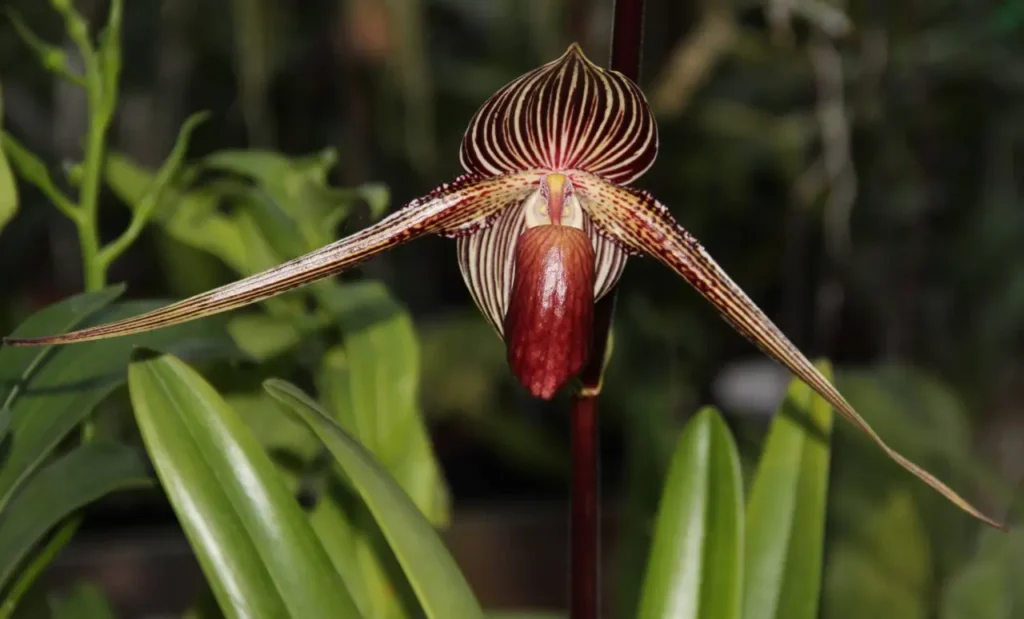
Cultivation and Challenges
Cultivating Rothschild’s Slipper Orchid presents a considerable challenge to even the most experienced orchid growers. Its highly specific habitat requirements, slow growth rate, and delicate ecosystem interactions make it a demanding species to care for outside of its natural environment. Therefore, only skilled and experienced orchid specialists attempt its cultivation.
For those who dare to take on the challenge, mimicking the orchid’s native habitat conditions is crucial. This includes providing the right temperature, humidity, and light levels, as well as ensuring proper air circulation and well-draining yet moisture-retentive soil.
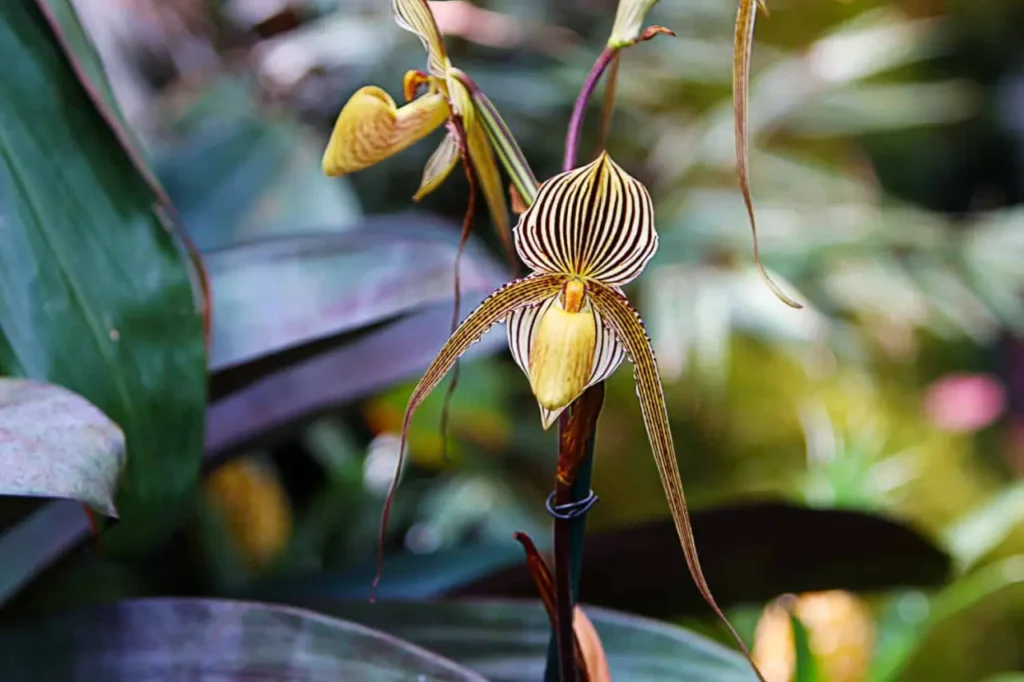
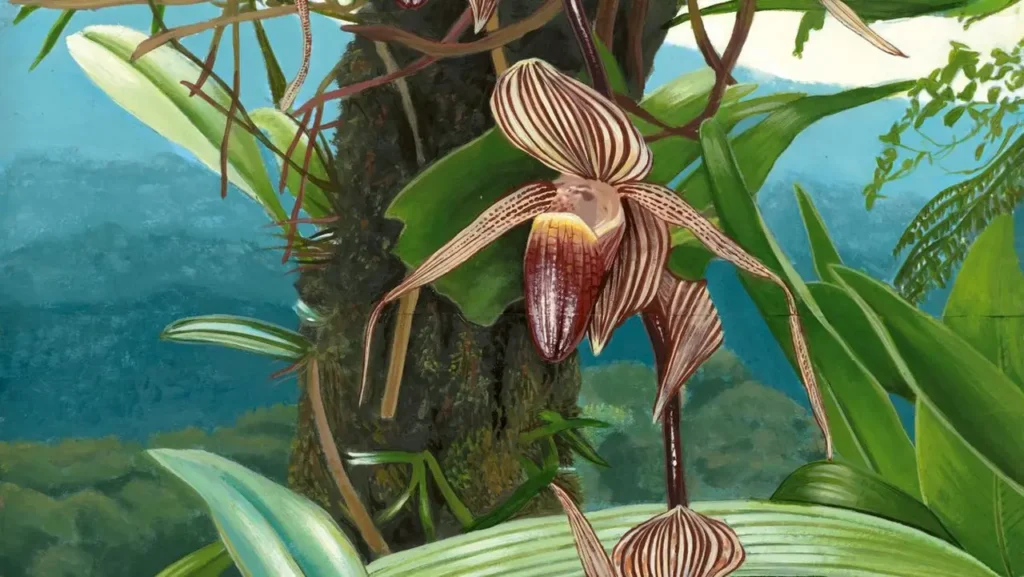
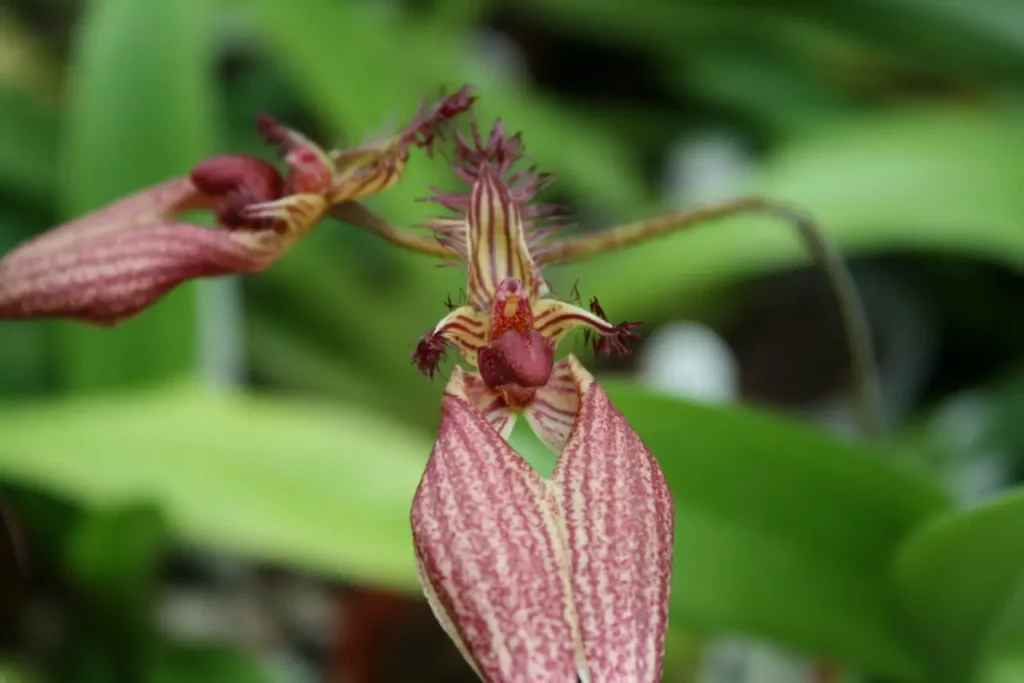
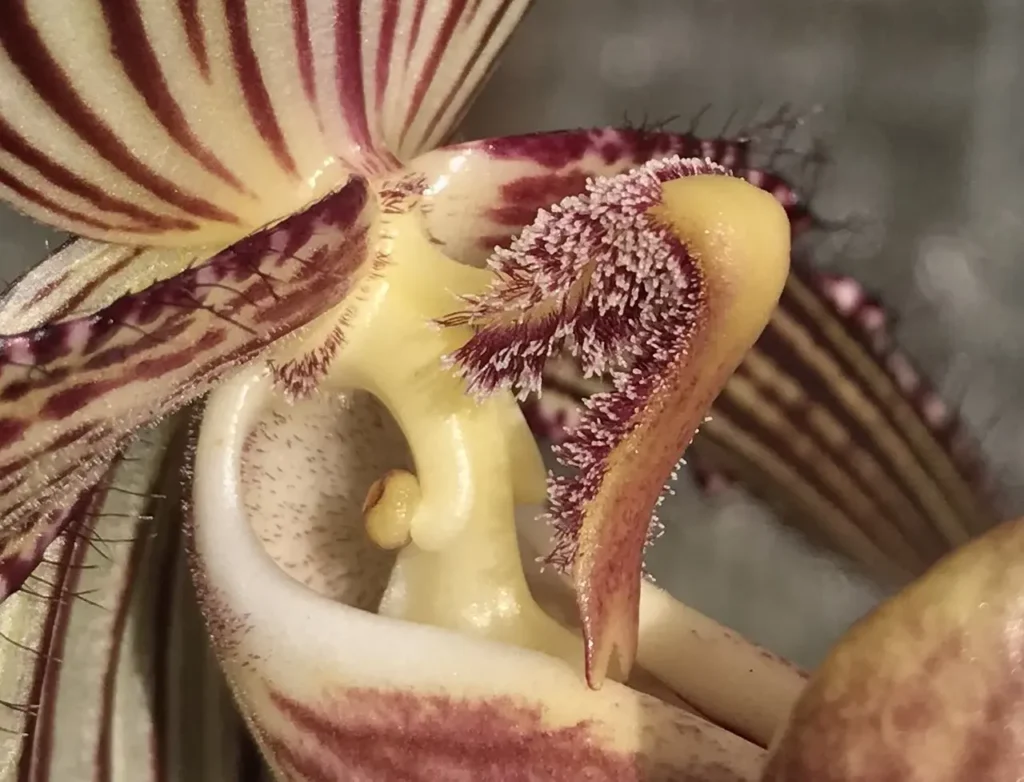
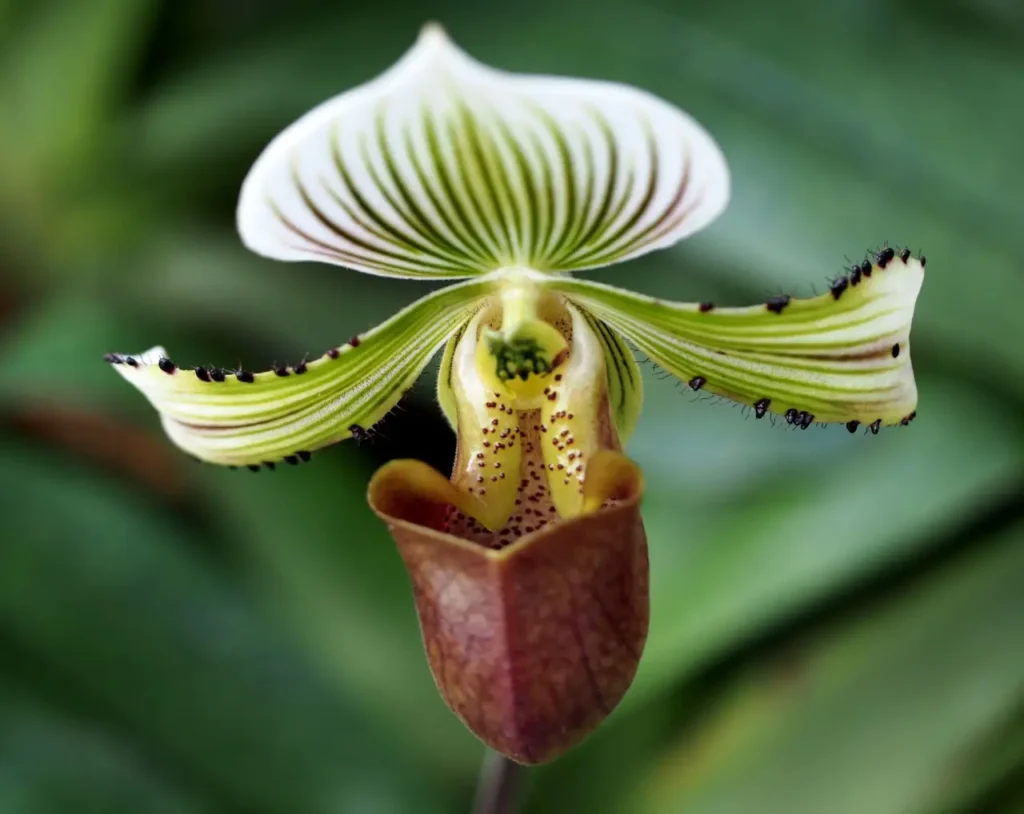
Rothschild’s Slipper Orchid stands as a symbol of nature’s exquisite artistry and the importance of conservation efforts in protecting our planet’s botanical treasures. With its alluring beauty and endangered status, this rare orchid serves as a reminder of the delicate balance between humans and the natural world. As we celebrate the allure of Rothschild’s Slipper Orchid, let us also recognize the urgency to preserve and protect such precious floral rarities for future generations to marvel at and cherish.
